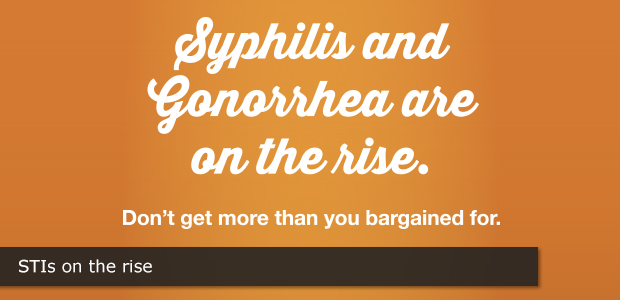
STI rates in Alberta are the highest they have been in decades, with no sign of levelling off.
Gonorrhoea rates in our province are the highest they have been since the late 1980s, and syphilis rates have surpassed the recent historic high last seen in 2009.
Syphilis rates are highest among MSM (men who have sex with men), and Aboriginal females are over represented in gonorrhoea statistics. STIs are a risk to anyone who is sexually active, and they represent a serious public health issue.
Albertans need to take steps to protect themselves from STIs, not only now but always. The public needs to know the risks, how to protect themselves, the importance of getting tested, and the importance of timely treatment if infected.
In the weeks ahead, AHS will increase its efforts to ensure the public - especially at-risk groups - know how to protect themselves and know where to receive treatment if they need it.
We will build on the successes of the www.sexgerms.com website where the public can find information and resources, including how to speak about STIs with their partner, and where to go for testing.
Two AHS-led campaigns in 2015 and 2016 were developed in response to increasing syphilis and gonorrhea rates in our province. The campaigns targeted heterosexual males aged 20 to 29, and men who have sex with men.
This third wave of targeted awareness campaigns will continue to provide knowledge and information about STIs in affected populations.
We aren’t stopping there. To address this risk of STIs, AHS continues to work collaboratively with community partners and healthcare providers, to build awareness and increase education and promote testing.
Community physicians have also played a key role in working with us to emphasize the importance to STI testing for their patients.
AHS has also partnered with Public Health Agency of Canada epidemiologists to conduct sexual network analyses and identify core transmitters in areas with high rates. This has provided additional information on popular hook up websites among MSM, and helped inform media awareness strategies.
AHS continues to work with the First Nations Inuit Health Branch and help inform decision makers on reserves where STI rates are highest, in order to develop strategies to keep their communities healthy.
Targeted outreach work has and continues to happen in Fort McMurray, Calgary and Edmonton to create more opportunities for at-risk groups to be tested. This includes increasing space and nursing resources in STI clinics, and adding expanded, population-specific clinic hours to serve the men who have sex with men population.
Any Albertan that is sexually active is at risk of contracting a sexually transmitted infection. The good news is many STIs can be treated and cured, but only if you know you have it.
Left untreated, STIs like chlamydia and syphilis can cause long-term damage including sterility and brain damage. While treatments are available for HIV or AIDS, there is no cure.
Visit www.sexgerms.com for more information and resources regarding STIs and keeping yourself and others safe.
Add your comment